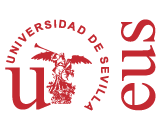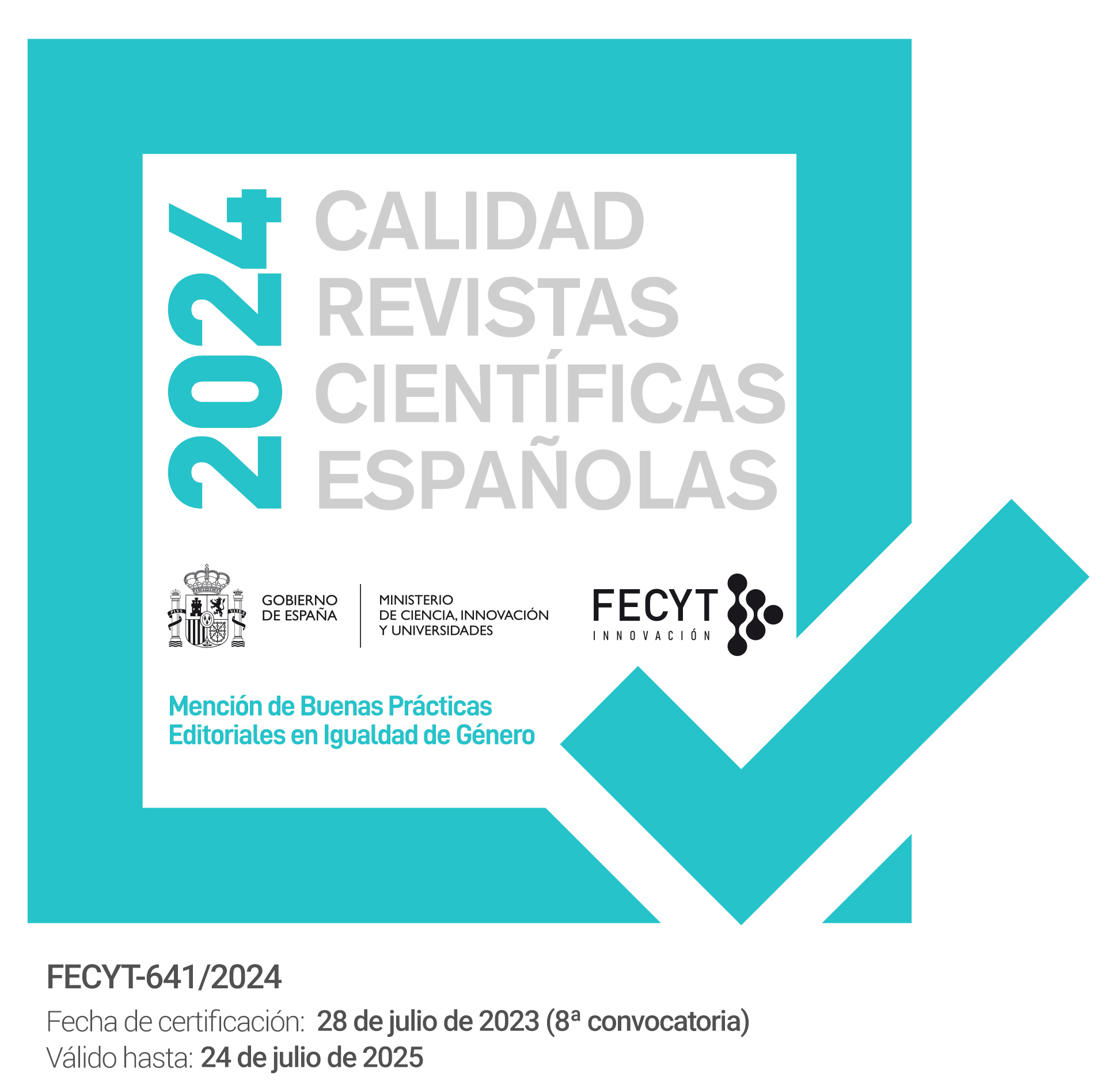Frome leonese to castilian scriptae in medieval documents of the monastery san pedro de eslonza. Romance writings <y, ll> and <j, i> for lat. <-Li->, diachrony, lexical diffusion and frequency factors
DOI:
https://doi.org/10.12795/PH.2019.v33.i01.05Abstract
The present paper studies castilianization processes in Leonese scriptae from the monastery of San Pedro de Eslonza and it’s surroundings between 1241 and 1399 focussing on Romance writings for the respective sounds originating in lat. -li-. We will show, that the process is not only relatively abrupt, but also follows a lexical diffusion depending on the frequency of the lexemes in question. The graphemes <y, ll> are probably the most eyecatching characteristic of Leonese scriptae, their eventual substitution by Castilian graphemes of the type <j, i> therefore provides the researcher with an excellent basis for the investigation of the mentioned castilianization. The arrival of Castilian writing systems in the –then former– Kingdom of León marks the first step towards a Castilian (later Spanish) written language in what later on will be the Realm of the Kingdom of Spain.
Downloads
Metrics
No metrics found.
Referencias bibliográficas
Borrego, J. (1996). Leonés. En M. Alvar (Ed.), Manual de dialectología hispánica. El español de España (pp. 139–159). Barcelona, España: Ariel.
Cabrera, C. (1991). Reconsideraciones sobre el problema de -LY-, K‘L-, -G‘L- y -T‘L- en el antiguo leonés. Anuario de Estudio Filológicos, 14, 51–62.
Fernández Catón, J. M. (Ed.) (2003). Documentos selectos para el estudio de los orígenes del romance en el Reino de León. Siglos X–XIII. León, España: Caja España, Fundación MonteLeón, Colección “Fuentes y Estudios de Historia Leonesa” y Testimonio Compañía Editorial.
García Arias, X. Ll. (1995). Asturianische und leonesische Skriptae/Las ‘scriptae’ asturianas y leonesas. En G. Holtus, M. Metzeltin y Ch. Schmitt (Eds.), Lexikon der Romanistischen Linguistik (LRL). Band II, 2. Die einzelnen romanischen Sprachen und Sprachgebiete vom Mittelalter bis zur Renaissance/Les différentes langues romanes et leurs régions d’implantation du Moyen Âge à la Renaissance (pp. 618–649). Tübingen: Niemeyer.
________ (22003). Gramática histórica de la lengua asturiana. Fonética, fonología e introducción a la morfosintaxis histórica. Oviedo, España: Academia de la Llingua Asturiana.
Gil, J. (22005). El latín tardío y medieval (siglos VI–XIII). En R. Cano Aguilar (Ed.), Historia de la lengua española. 2a edición actualizada (pp. 149–182). Barcelona, España: Ariel.
Glessgen, M. (2008). Les lieux d’écriture dans les chartes lorraines du XIIIe siècle. Revue de Linguistique Romane, 72, 413–540.
Koch, S. (en prep.). Leonesisch und Kastilisch im Mittelalter – Konkurrenz und gemeinsame Tendenzen in Urkunden des 13–15. Jahrhunderts.
Koch, P. y Oesterreicher, W. (2007): Lengua Hablada en la Romania: Español, Francés, Italiano. Madrid, España: Gredos.
Marcet, V. (2007). El sistema consonántico del leonés: Peculiaridades fonéticas y usos gráficos en la documentación notarial del siglo XIII (Colección Vitor 203). Salamanca, España: Ediciones Universidad de Salamanca.
Menéndez Pidal, R. (121966). Manual de gramática histórica española. Duodécima edición. Madrid, España: Espasa–Calpe.
________ (2005): Historia de la lengua española. Vol. I. Madrid, España: Fundación Menéndez Pidal, Real Academia Española.
Morala, J. R. (22005). Del leonés al castellano. En R. Cano Aguilar (Ed.), Historia de la lengua española. 2a edición actualizada (pp. 555–569). Barcelona, España: Ariel.
Penny, R. (22009). A History of the Spanish Language. Second Edition. Sixth Printing. Cambridge, UK: Cambridge University Press.
Ruiz Asencio, J. M. y Ruiz Albi, I. (Eds.) (2007). Colección documental del monasterio de San Pedro de Eslonza. I (912–1300). León, España: Centro de Estudios e Investigación “San Isidoro”, Caja España de Inversiones, Archivo Histórico Diocesiano.
Staaff, E. (21992). Étude sur l’ancien dialecte léonais d’apreès des chartes du XIIIè siècle. Facsímil de la edición de Uppsala de 1907 (Academia de la Llingua Asturiana. Llibrería Facsimilar 18). Oviedo, España: Academia de la Llingua Asturiana.
Vignau y Ballester, V. (1885). Cartulario del Monasterio de San Pedro de Eslonza. Primera parte. Madrid, España: Imprenta de la Viuda de Hernando y C.a.
Wang, W. S.-Y. (1969). Competing Change as a Cause of Residue. Language, 45, 9–25. https://doi.org/10.2307/411748
Wright, R. (2000): El tratado de Cabreros (1206): estudio sociofilológico de una reforma ortográfica (Papers of the Medieval Hispanic Research Seminar 19). London, UK: Department of Hispanic Studies – Queen Mary and Westfield College.
Zamora Vicente, A. (21979). Dialectología española. Segunda edición muy aumentada. Madrid, España: Gredos.
Published
How to Cite
Issue
Section
License
The printed and electronic editions of this Journal are edited by the University of Seville Editorial, and the source must be cited in any partial or total reproduction.
Unless otherwise indicated, all the contents of the electronic edition are distributed under a license of use and distribution “Attribution-NonCommercial-NoDerivatives 4.0 International” . You can view the informative version and the legal text of the license here. This fact must be expressly stated in this way when necessary.
Authors who publish in this journal accept the following conditions:
- The author/s retain copyright and grant the journal the first publication right, and accept it to be distributed with the Creative Commons By NC ND 4.0 licence, which allows third parties to use what is published whenever they mention the authorship of the work and the first publication in this journal and whenever they do not make commercial use and reuse it in the same way.
- Authors can make other independent and additional contractual agreements for the non-exclusive distribution of the article published in this journal (e.g., include it in an institutional repository or publish it in a book) provided they clearly indicate that the work was published for the first time in this journal.
Authors are allowed and recommended, once the article has been published in the journal Philologia Hispalensis (online version), to download the corresponding PDF and disseminate it online (ResearchGate, Academia.edu, etc.) as it may lead to productive scientific exchanges and to a greater and faster dissemination of published work (see The Effect of Open Access).
Accepted 2019-12-09
Published 2019-12-29
- Abstract 277
- HTML (Español (España)) 49
- PDF (Español (España)) 80












